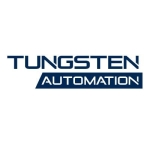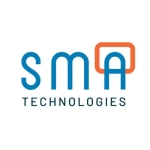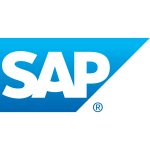What is our primary use case?
We are using Orchestrator, attended robots, and unattended robots.
Our primary use case for this solution is in the financial industry.
We do not yet run our automations in a virtual environment.
With respect to how easy it is to automate our company's processes, on a scale of one to five, I would rate this solution a four. The whole interface needs some TLC because it can be a bit tricky.
We have used the UiPath training and it has improved a lot since we first tried it. When I used it a while ago, it had its problems. I think it came due to the fact that it was not developed by native English speakers. For example, they had questions that were simply wrong. It has improved a lot and now it is beneficial. I think that the biggest challenge is for them to stay up to date.
From the point that we purchased our UiPath license until we had our first robot was approximately four and a half months.
How has it helped my organization?
This solution has saved us time, but more importantly, it has saved us money by not paying certain fees or certain penalties. With respect to saving money, the last amount that I saw was six figures. Legally, I am not allowed to say more.
Being in the finance business and having certain audits, this solution helps to make sure that we have validations and checks in place to help us to do our processing quicker. Also, with invoices, normally when you pay them by a certain date you get a certain discount. So, we've managed to significantly increase the savings we get just from having invoices processed earlier or on time.
In terms of eliminating human errors, we have one process where we've eliminated errors completely. The average is that we eliminate errors by fifty to sixty percent.
What is most valuable?
The most valuable feature in Orchestrator is the scalability.
The most valuable feature of unattended robots is that they are always available.
What needs improvement?
They have added a lot of new features over the past months, and things are a little more complicated. In the interface, sometimes you just have the screen full of windows and figuring out what goes where can be a bit tricky.
We would like to see improvements in Studio such as syntax highlighting and documentation functionality for audit purposes. That would be great.
Buyer's Guide
UiPath Platform
October 2025
Learn what your peers think about UiPath Platform. Get advice and tips from experienced pros sharing their opinions. Updated: October 2025.
872,922 professionals have used our research since 2012.
What do I think about the stability of the solution?
With respect to the stability, on a scale from one to five, I would rate this solution a four. There are a couple of things that break the robots, and it has to do with the technology itself. The user interface and other components are prone to error, and it's not one hundred percent automation. This is something that you take into consideration when you do RPA. They have also had a couple of updates over the past years where they made significant changes that basically broke the robots.
What do I think about the scalability of the solution?
We have more than a hundred people involved with RPA.
How are customer service and support?
So far, I have only used the ticketing through email support, and it is sometimes frustrating. I've only just learned that there is telephone support. It is hard for me to rate customer service because I was looking for telephone support, thinking that it was not available.
In general, there is room for improvement support-wise.
Which solution did I use previously and why did I switch?
We are in an industry that is heavily targetted by low-cost countries, so in order for us to stay competitive, we had to do something. When we did our research, the two obvious solutions were RPA and AI.
When we started, it was with Blue Prism, and we learned from the issues we had. When we were looking at what we could do as an AI, UiPath started to emerge and started to become a big player. We then looked at capabilities and the licensing model, and at the time there were two vendors that had pretty similar capabilities.
These two were Automation Anywhere and UiPath. Automation Anywhere had a very high initial investment requirement and UiPath didn't, which is why we stayed with UiPath. I believe that you had to buy at least a hundred licenses for Automation Anywhere, whereas with UiPath you can buy one or two.
It looks like we made the right choice.
How was the initial setup?
The initial setup of UiPath was straightforward. The approvals on our side slowed things down. If it were not for that then we could have been up and running in six weeks.
What about the implementation team?
We implemented the solution ourselves.
What was our ROI?
We only automate processes where we expect to see ROI within twelve months. As such, most of our processes have an ROI between six and twelve months.
Which other solutions did I evaluate?
We evaluated Blue Prism and Automation Anywhere before choosing this solution.
What other advice do I have?
We are in the process of moving this solution to the cloud.
From a cost perspective, it is very hard to get ROI with an attended robot. The price is too high.
My advice to anybody who is researching this solution is not to overthink it. RPA is a technology that you learn by doing it.
This is a very strong product. I think that there is a lot of good investment and a lot of good attention out there. This is the best or one of the two best tools out there. They are listening to what the market wants and just need to be careful not to get greedy. That said, there is always a little bit of space for improvement.
I would rate this solution a ten out of ten.
Which deployment model are you using for this solution?
On-premises
Disclosure: My company does not have a business relationship with this vendor other than being a customer.

















